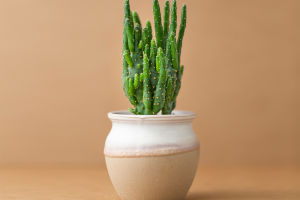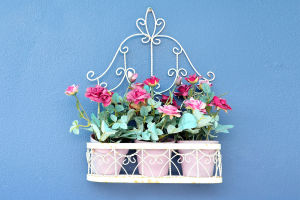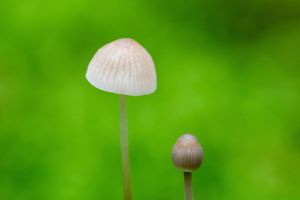Potted plants refer to plants that are planted in pots. The plants and the pots are integrated to create a unique landscape, and live plants are used instead of artificial flowers. Bonsai is not only a gardening technique but also an art form.
In potted plants, the shape and posture of the plants are combined with the form and decoration of the pots to create a distinctive landscape. The design of potted plants can pursue different styles, including simplicity, delicacy, gorgeousness, and vigor, and showcase the designer's aesthetics and creativity. Potted plants have become an important cultural heritage in many countries and regions.
Potted plants can be classified based on their pot size. Extra-large potted plants are more than 90 centimeters but less than 1.5 meters and are often found in large gardens or at large-scale exhibitions.
Large potted plants range from 70 to 90 centimeters and can be moved by two people at most. They are a popular height for potted plants both domestically and abroad.
Medium-sized potted plants range from over 30 to less than 75 centimeters and are the most commonly used type of potted plant. They are easy to manage and can be placed in a variety of settings, such as living rooms, coffee tables, and auditoriums.
Medium-sized potted plants are the most popular and expensive type of potted plant in the world, and they have the highest ornamental value.
Small potted plants are potted plants that are under 30 centimeters in size. They can be placed on coffee tables, desks, or in small rooms.
Potted plants have many benefits. Firstly, they can beautify the environment, increase the number of indoor green plants, improve indoor air quality, and reduce indoor pollutants. Secondly, potted plants can relieve stress and provide people with a sense of relaxation and comfort.
Studies have shown that indoor potted plants can reduce psychological stress and anxiety, improve emotional state and physical and mental health. Additionally, potted plants can improve people's concentration and work efficiency, which can bring positive effects to people.
While potted plants are beautiful and functional, they require certain knowledge and skills to maintain. Here are some basics of bonsai care:
1. Choose the right pot and soil: The pot and soil of potted plants are crucial to their growth and development. The size of the pot should be appropriate for the plant's root system, neither too small nor too large. The soil should be well-ventilated and well-drained.
2. Watering: Potted plants need to be watered moderately, and the soil should not be too wet or too dry. In summer, more watering is necessary, while less watering is required in winter.
3. Suitable temperature: Each plant has its own ideal temperature for growth. Generally, the suitable temperature for potted plant growth is between 15 and 34 degrees Celsius, with an ideal growth temperature of 22 to 28 degrees Celsius. In summer, the indoor temperature should not exceed 34 degrees Celsius, while in winter, it should not be lower than 6 degrees Celsius.
Planting is a fun and rewarding way to garden, as it beautifies the environment and improves physical and mental health. With proper selection and maintenance, potted plants can become a beautiful addition to any home, providing joy and happiness to those who care for them.


